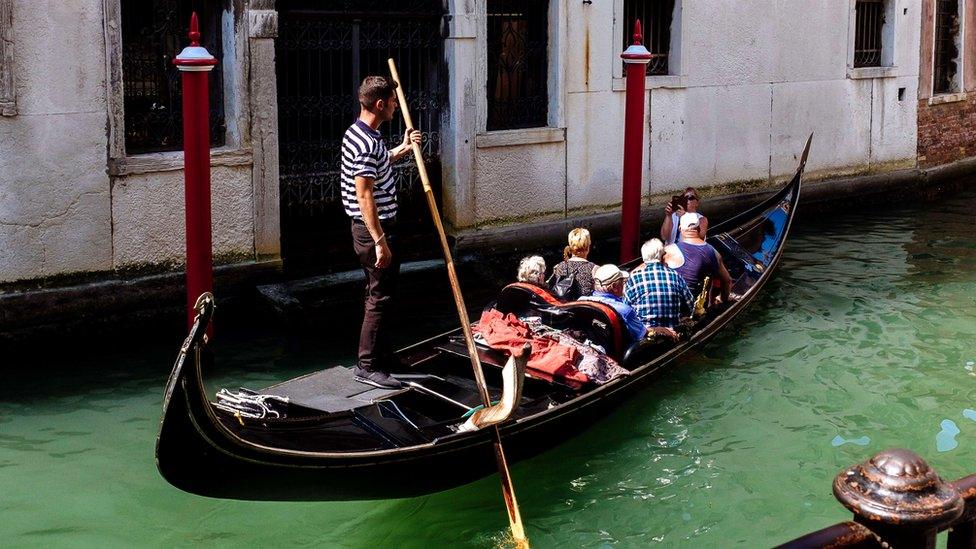Flooded Venice battles new tidal surge
- Published
The BBC's Jenny Hill reports on Venice's flood battle
Flooded Venice has been hit by a new high tide of 154cm (5ft), giving residents no respite from a crisis costing Italy millions of euros.
World-famous St Mark's Square, a magnet for tourists, has been closed, and schools are shut for a third day.
The canal city's famous waterbuses - the vaporetti - are not running.
The 187cm peak on Tuesday was the highest level in more than 50 years, damaging monuments, shops and homes. More than 80% of the city was flooded.
The government declared a state of emergency in the Unesco world heritage site.
Residents with flood-damaged homes will get up to €5,000 (£4,300; $5,500), and businesses up to €20,000 in compensation.

Desperate measures as water seeps everywhere
The BBC's Jenny Hill in Venice writes:
The first flood sirens went off at dawn, an eerie sound rising over the ancient bridges and waterways of the city.
Within a couple of hours, the murky green water of the Grand Canal had risen level with its bank, slapping over the paving stones as boats went past.
Nearby streets quickly flooded. Tourists, shoes covered in plastic bags, carried their luggage along raised narrow trestle walkways, which the authorities have put up to keep the pedestrian traffic moving.
On either side, dirty water continued to rise. At ground level, in their rubber wellies, business owners were already starting to operate small pumps. Many had raised the flood barriers across their doorways - apparently to little effect. Water was already seeping up to ankle height in the souvenir shops and cafes.
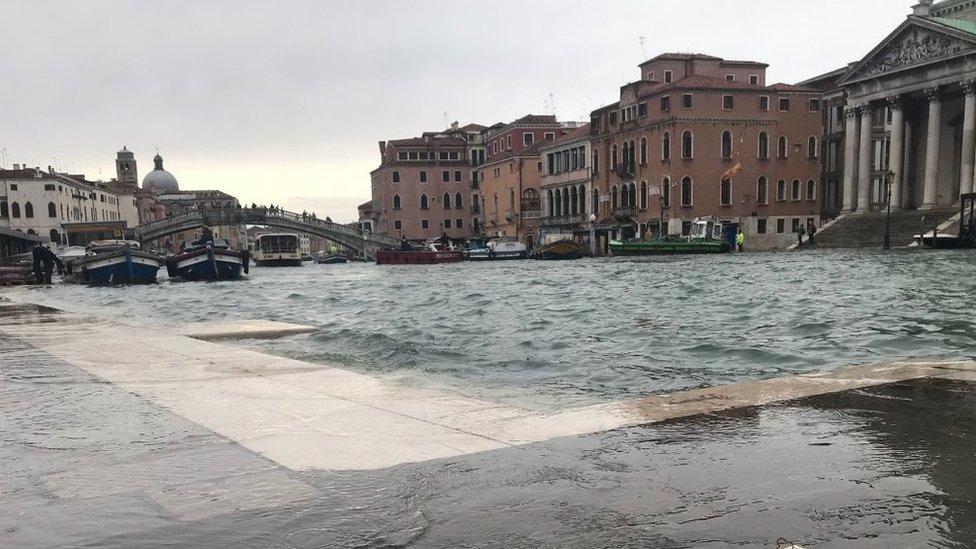
The Grand Canal's water is now level with the pavement

"It hurts to see the city so damaged, its artistic heritage compromised,, external its commercial activities on its knees," Prime Minister Giuseppe Conte, who visited Venice on Wednesday, wrote in a Facebook post (in Italian).
The city has about 50,000 residents, but about 20m tourists visit every year.
Hotels were forced to cancel reservations, some reportedly as far ahead as December, as photos of Venice underwater spread across the world.
The tides have been worsened by sirocco winds blowing from Africa, and there are fears that global warming is increasing the frequency and severity of such floods.
Waters are expected to recede over the weekend.
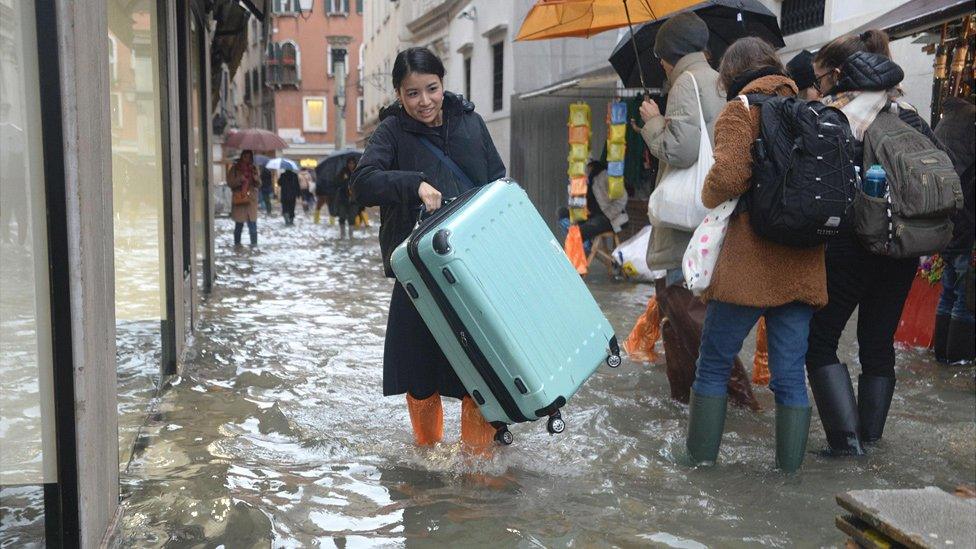
Wellington boots are now essential footwear in Venice
The government says Venice's elaborate flood defence system, external will not be operational until 2021 - yet work began on it back in 2003.
Fondamenta Zattere - a long, much-loved waterfront area where tourists enjoy strolling - is also under water.
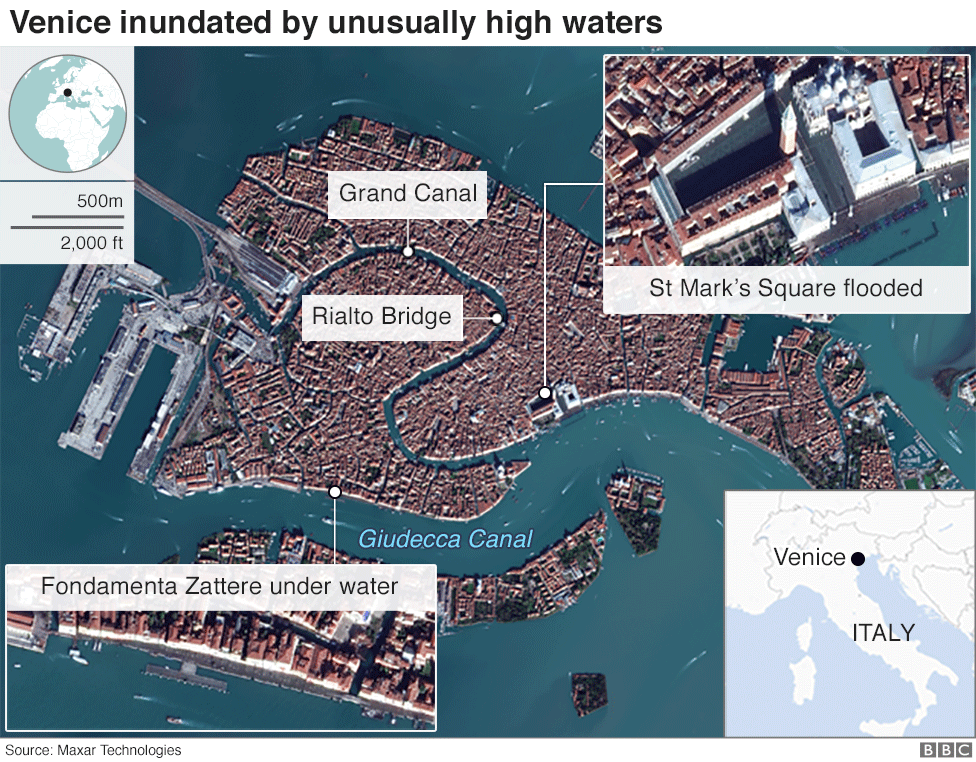

The city is made up of more than 100 islands inside a lagoon off the north-east coast of Italy. It suffers flooding on a yearly basis.
Venice faces further flooding
The government has pledged to release €20m in aid for Venice.
Culture Minister Dario Franceschini said the task of repairing the city would be huge, adding that more than 50 churches had been damaged.
Only once since official records began in 1923 has the tide been higher than it reached this week - hitting 194cm in 1966.

A flooded bookshop: Workers are trying to dry out damp prints
The mayor of Venice, Luigi Brugnaro, blamed climate change for the flood, saying the impact was "huge" and would leave "a permanent mark". Strong winds lashing the area are contributing to the crisis.
Mr Conte said the government would accelerate the Mose project - construction of a hydraulic barrier system to protect the lagoon from rising sea levels and winter storms.
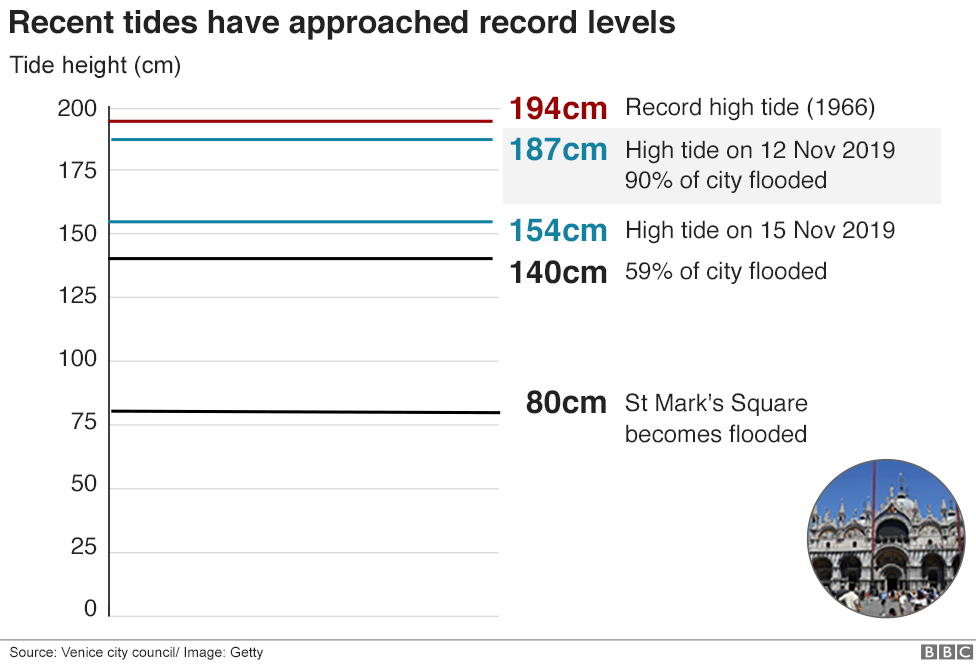

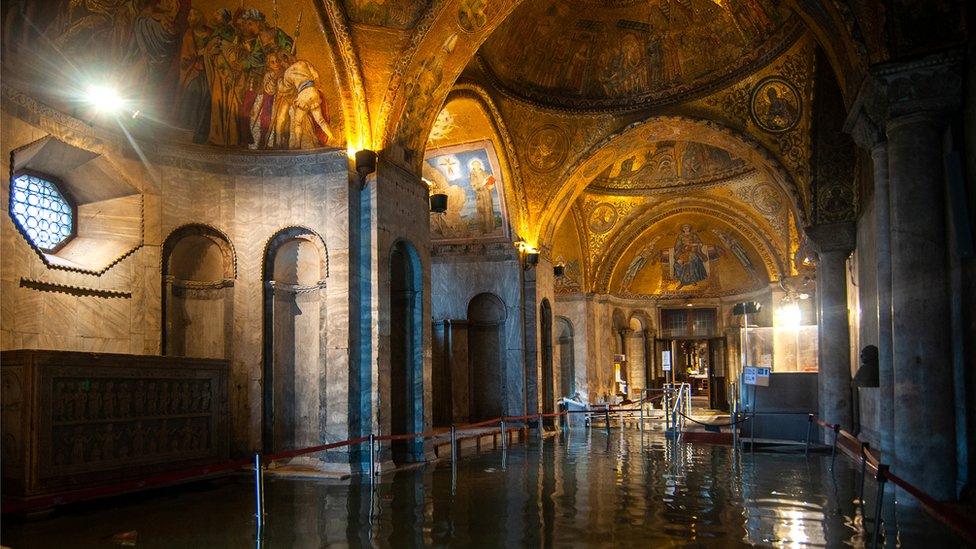
St Mark's Basilica - dating back to the 11th Century - was hit by the flood
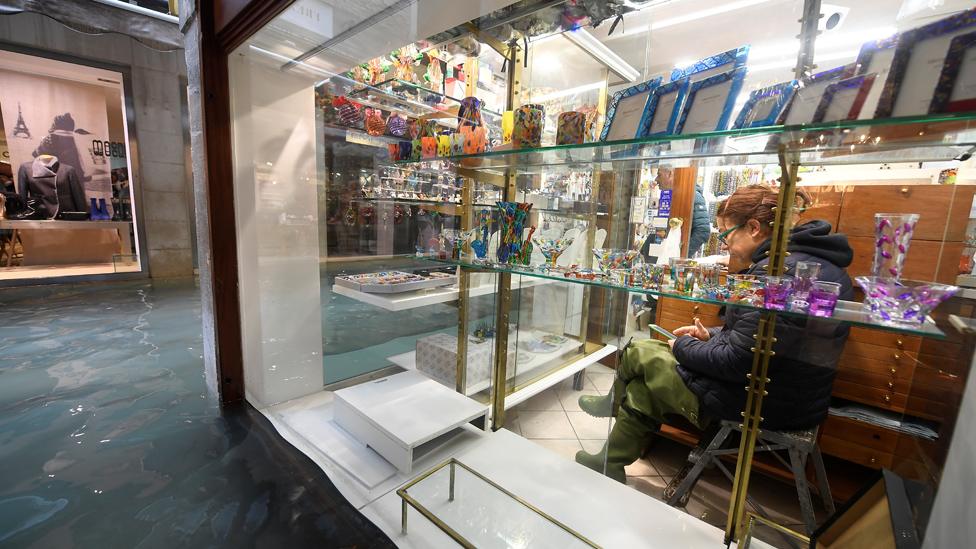
Shops appear marooned by the floodwaters
All images are subject to copyright.
- Published13 November 2019
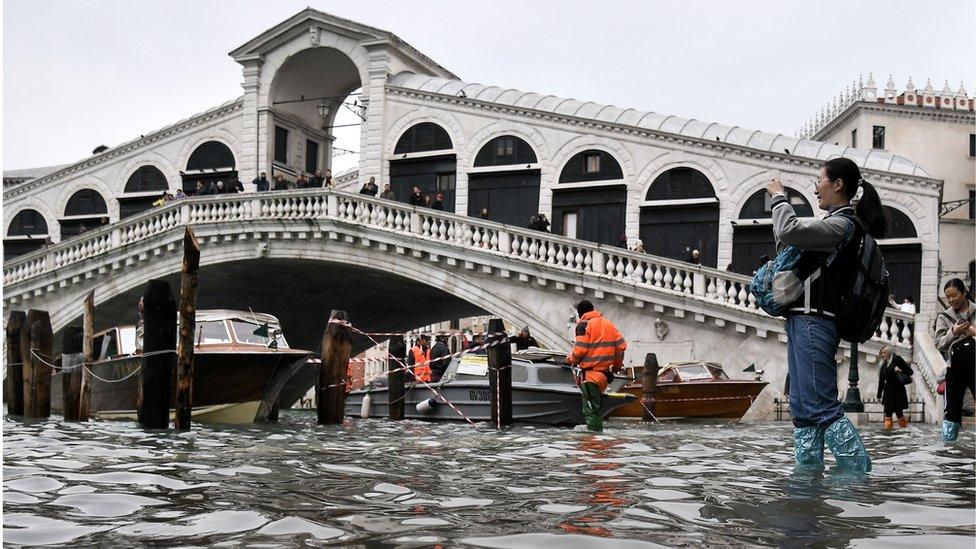
- Published31 December 2018
